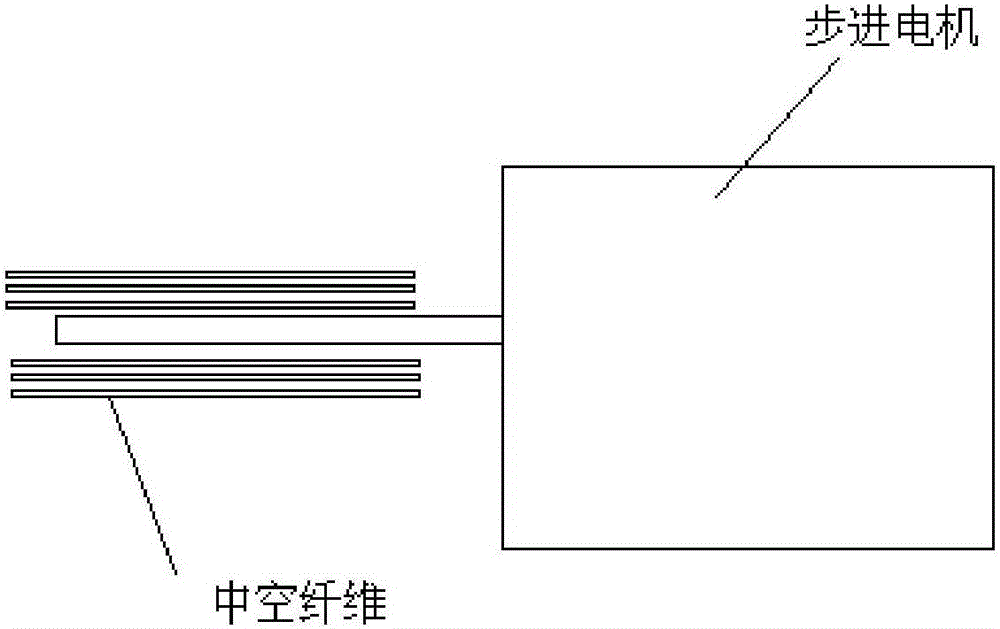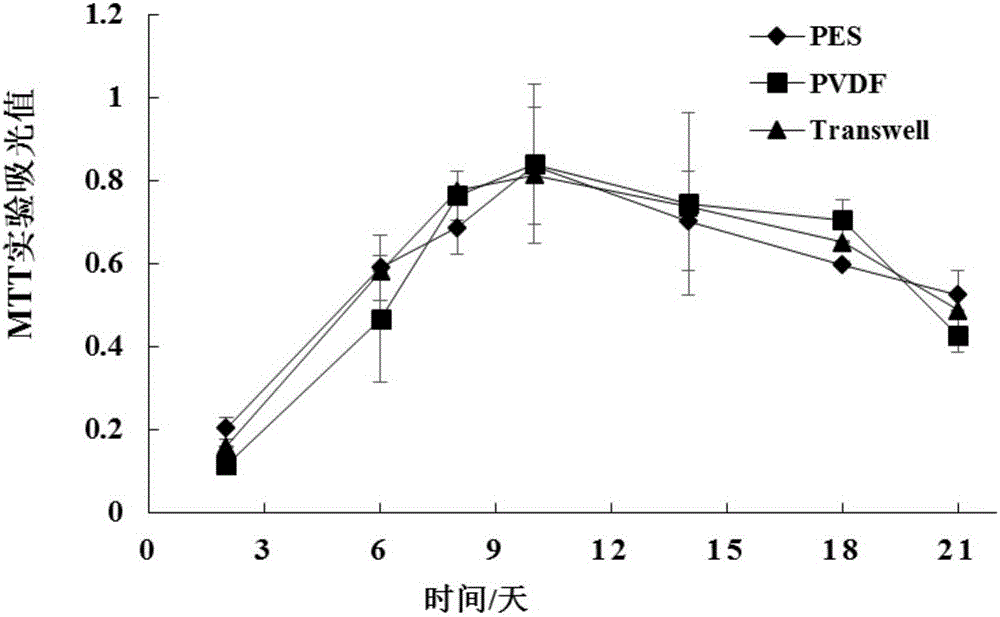In-vitro simulated organoid cultivation method for colon cancer cells
A technology of colon cancer cells and culture methods, which is applied in the field of in vitro tissue culture of colon cancer cells, can solve problems such as increased expression levels of brush border enzymes, achieve perfect cell function analysis, promote uniform cell attachment, and promote rapid differentiation effect
- Summary
- Abstract
- Description
- Claims
- Application Information
AI Technical Summary
Problems solved by technology
Method used
Image
Examples
Embodiment 1
[0053] Embodiment 1, an in vitro tissue-like culture method of colon cancer cells (the construction method of the Caco-2 cell hollow fiber reactor used for functional component research), the following steps are carried out successively:
[0054] 1), Sterilization of hollow fiber:
[0055] Cut the hollow fiber into small pieces with a length of 3 cm, soak in PBS buffer solution (pH=7.4), and sterilize in a steam autoclave (1.1 atmospheres, 121°C) for 20 minutes;
[0056] After the sterilization is completed, take out the hollow fiber in the ultra-clean bench and place it on a plate to air dry, usually overnight;
[0057] The above-mentioned hollow fibers are PES hollow fiber membranes or PVDF hollow fiber membranes;
[0058] The PES (polyethersulfone) hollow fiber membrane has a pore size of 0.1 μm and a pure water flux of 1000 L / m at 0.1 MPa 2 h, inner / outer diameter 0.8 / 1.4mm;
[0059] The PVDF (polyvinylidene fluoride) hollow fiber membrane has a pore size of 0.2 μm and ...
PUM
| Property | Measurement | Unit |
|---|---|---|
| pore size | aaaaa | aaaaa |
| pore size | aaaaa | aaaaa |
| pore size | aaaaa | aaaaa |
Abstract
Description
Claims
Application Information
 Login to View More
Login to View More - Generate Ideas
- Intellectual Property
- Life Sciences
- Materials
- Tech Scout
- Unparalleled Data Quality
- Higher Quality Content
- 60% Fewer Hallucinations
Browse by: Latest US Patents, China's latest patents, Technical Efficacy Thesaurus, Application Domain, Technology Topic, Popular Technical Reports.
© 2025 PatSnap. All rights reserved.Legal|Privacy policy|Modern Slavery Act Transparency Statement|Sitemap|About US| Contact US: help@patsnap.com



